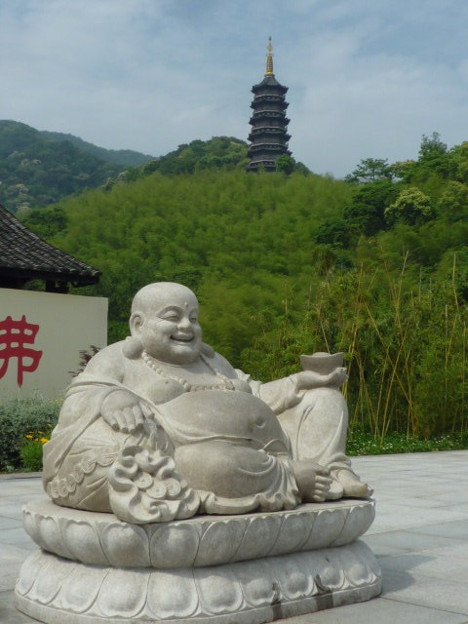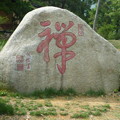布袋腹になったらどないしょう!布袋と千仏塔〜仏教彫刻 Smiling Budai & Pagoda
- 270
布袋を禅僧と見る向きもあるが、これは後世の付会である。布袋と禅宗の関係が見られるのは、11世紀初頭、『景徳傳燈録』巻27に「禅門達者雖不出世有名於時者」として、梁の宝誌や、天台智顗、寒山拾得らの異僧・高僧たちと共に、「明州布袋和尚」として立伝される頃からのことである。
弥勒菩薩像はインドでは水瓶を手にする像として造形されたが、中国においては、唐までは足を交差させ椅子に座る像として造像され、元明時代以降は弥勒の化身とされた布袋として肥満形で表された。
Budai sits with a tall pagoda on a hilltop for the background.
Budai or Pu-Tai (Chinese: 布袋), or 布袋(Hotei) in Japanese, is a Chinese folkloric deity.
His name means "Cloth Sack.
He is almost always shown smiling or laughing, hence his nickname in Chinese,
the Laughing Buddha.
While in India Miroku Bosatsu was shaped as a statue having suihei in his hand, in China it was shaped as a statue sitting cross-legged on a chair until the Tang and was shown as a corpulent figure of Hotei, an incarnation of Miroku after the Yuan and Ming dynasties.
お気に入り (0)
まだお気に入りに追加している人はいません。
コメント (0)
まだコメントがありません。最初のコメントを書いてみませんか?
コメントするにはログインが必要です。フォト蔵に会員登録(無料)するとコメントできます。






